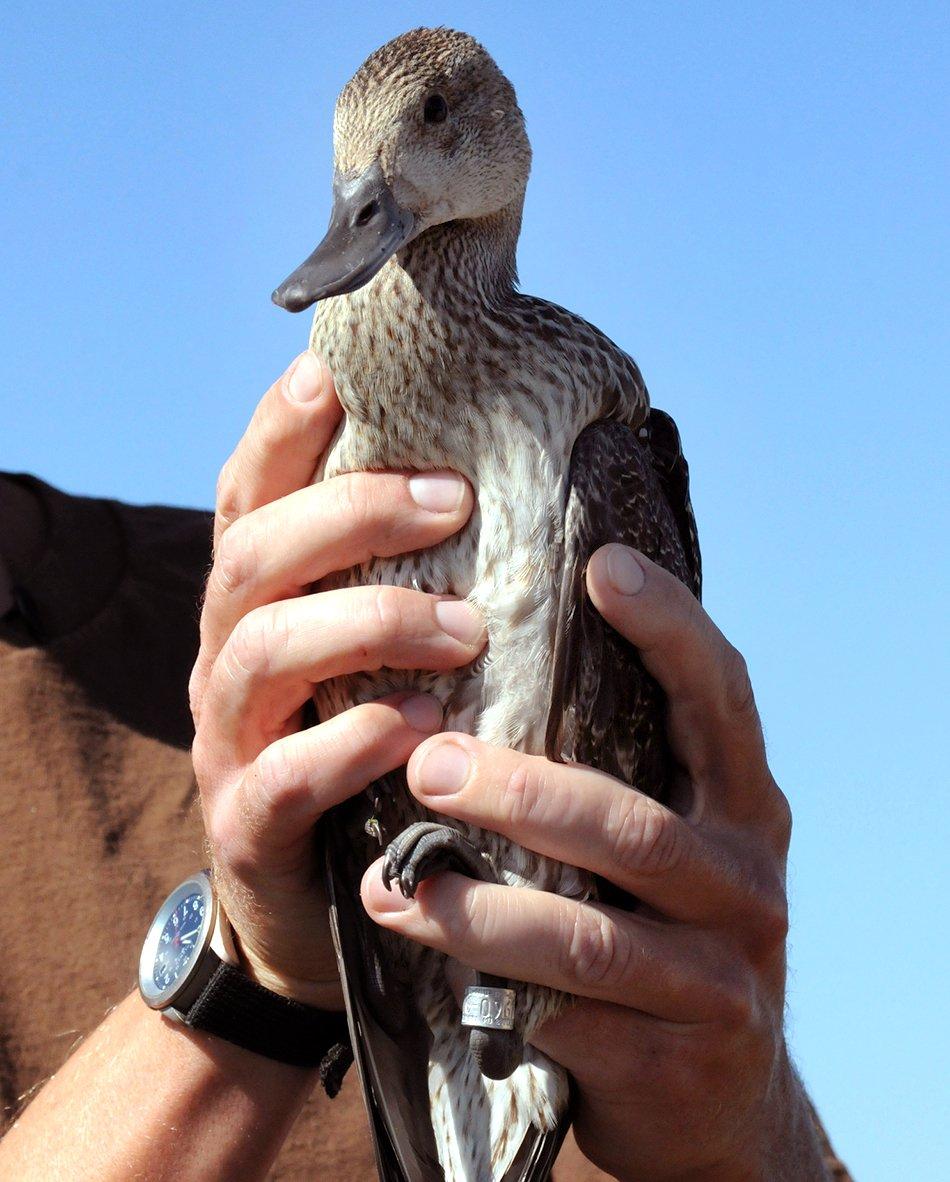Stories behind a bird's origins and journey fascinate hunters

But the excitement increases when that moment includes a shiny bonus on the bird's leg.
Waterfowl hunters love bands. We collect them, investigate their origins and give them places of honor on our lanyards. Sometimes, if we're very good or extremely fortunate, we can even pass up shots at birds in hopes of taking banded ducks or geese.
We don't think about it while hunting, but banding is critically important to waterfowl management. Band recovery data tells biologists how annual harvests are distributed throughout the flyways. Further, researchers can use band info to estimate harvest and survival rates for some species, and that information becomes important in determining annual regulations.
But hunters, including me, don't think about that after shooting a banded bird. They're really concerned with the story the band holds: where and when the duck or goose was banded, the age of the bird and perhaps how far it journeyed before you shot it.
Sometimes, the information you receive after reporting a band isn't that romantic. A few years ago, I shot banded geese during separate late-season hunts; one from a frozen corn field, the other during an open-water hunt the final day of the season. An online report of the band numbers revealed both birds had been banded less than a mile from where they died. One was almost 10 years old and had probably lived at a nearby park its entire life. It didn't make for a riveting tale, but the data was still pretty important, as it illustrated the prevalence of local Canada geese in the area after many migrants had flown through.
Conversely, some bands tell far-out stories. My group of waterfowl bums has taken geese banded in Manitoba and Ontario, a ringbill banded in Minnesota but killed in South Dakota, and gadwalls, pintails and mallards from various Canadian provinces.
One of our most interesting band came via a drake goldeneye a buddy shot during late November in central Wisconsin. Shooting a banded diver is relatively uncommon anyway, but this band was so old and worn we couldn't make out any writing. My friend finally got enough information off the metal to report his bird. The whistler was more than 14 years old.
That band would be our top find if not for the infamous hen mallard. Years earlier, another friend and I crouched in his canoe at a popular public hunting area when a suzie cupped her wings and zipped over our decoys. We rose and fired simultaneously, and the duck hit the water with a splash. As my buddy's dog retrieved the bird, we agreed that he had shot it. I was a bit jealous, though, when we soon realized the mallard was banded.
Man, what luck, I said. Does it look old?
My friend continued reading the band in silence.
Come on, what does it say? I said.
He stammered for a minute.
It says it's from a game farm about 60 miles south of here, he replied.
Sure enough, our wild banded duck was likely a tower-shoot escapee that had gone feral.
Hey, not every banded bird can be an ancient specimen from the boreal forest. Still, we didn't bother reporting that piece of metal.






